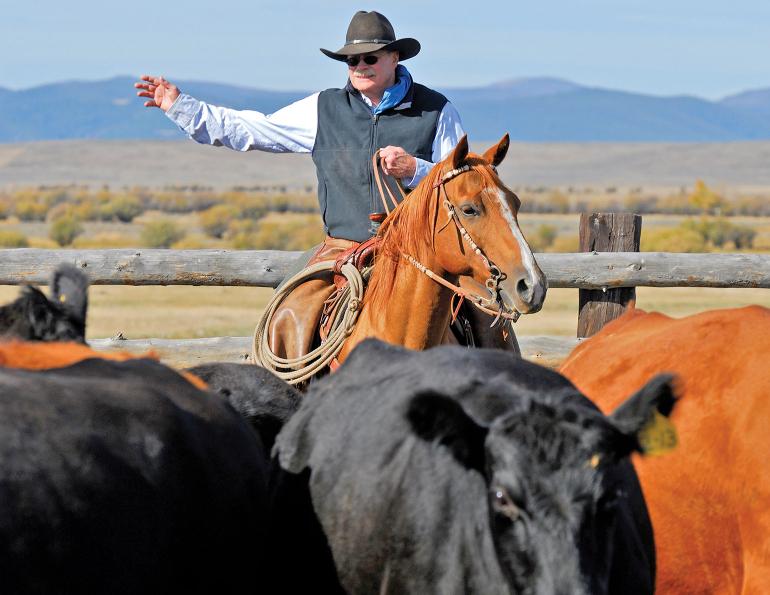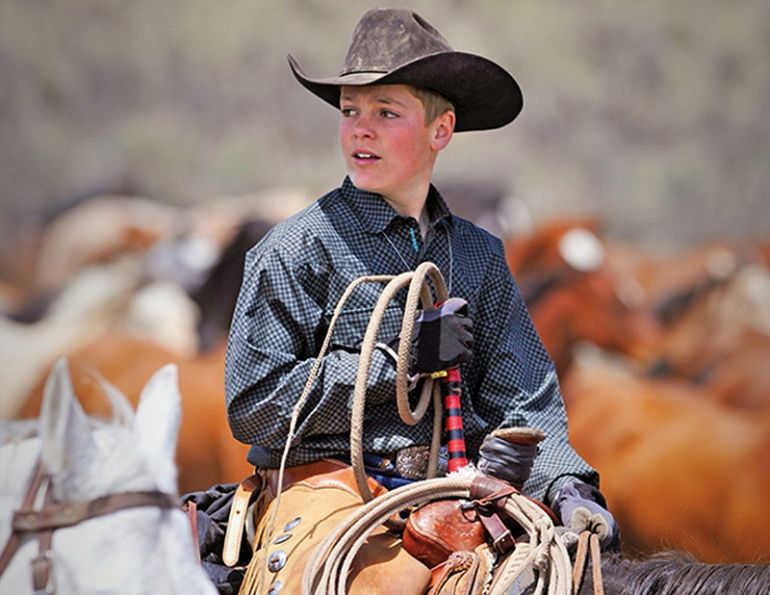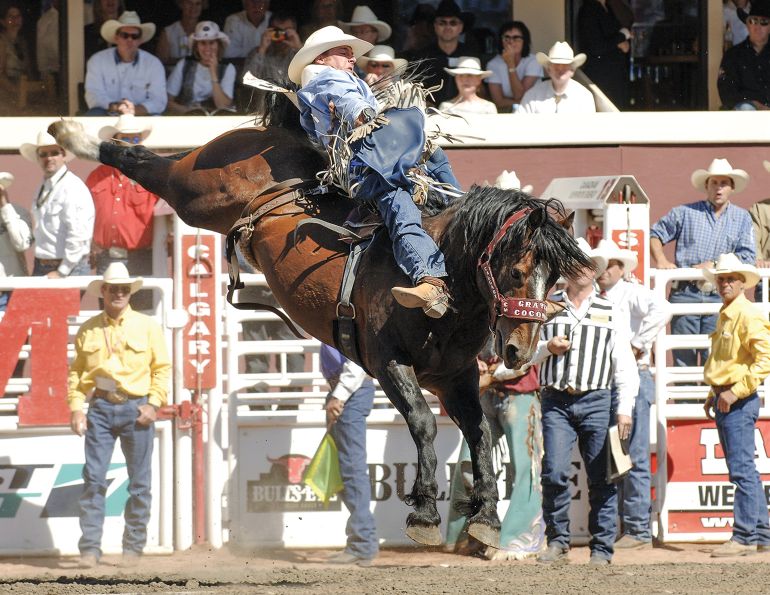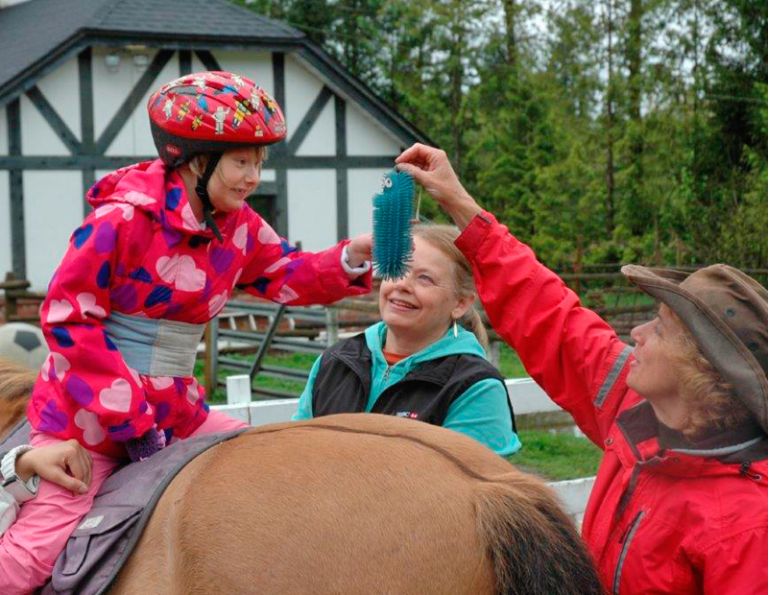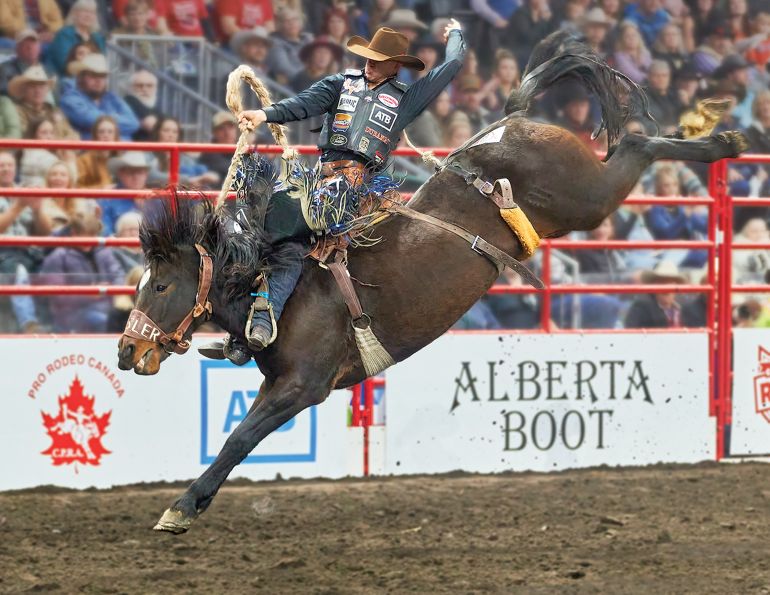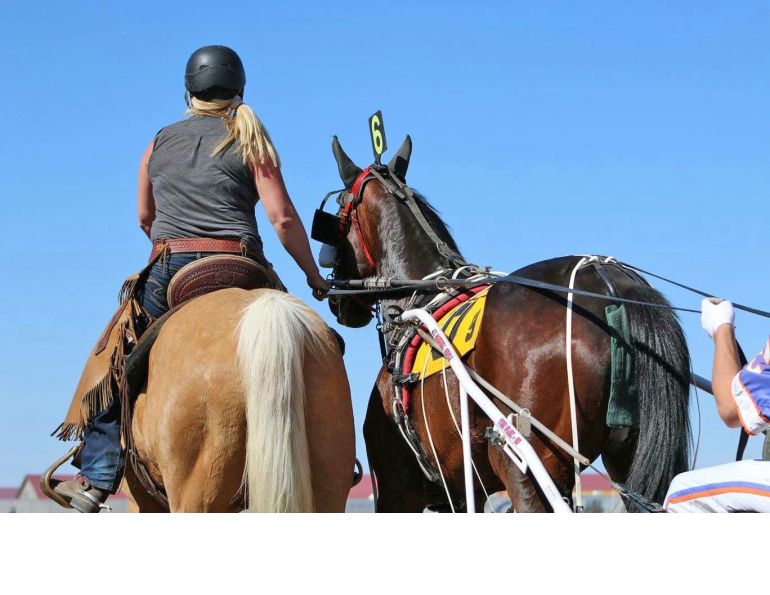By Tania Millen, BSc, MJ
Cowboys are icons of the North American Wild West, and the cowboy culture continues to dominate Canada’s Western provinces.
“There’s something about being out in the hills by yourself with just a horse and a dog for company,” says Mack Burke, a 21-year-old cowboy who works full-time at the Gang Ranch in central British Columbia (BC) west of Williams Lake.
Founded in 1863, the Gang Ranch was purchased in 2022 by Douglas Lake Ranch located south of Kamloops, BC. It remains a throwback to earlier times. With over one million acres of grazing rights that extend west into the gnarly Chilcotin Mountains where bears, cougars, and wolves roam, Gang Ranch cowboys still live and work as their predecessors did over 100 years ago.
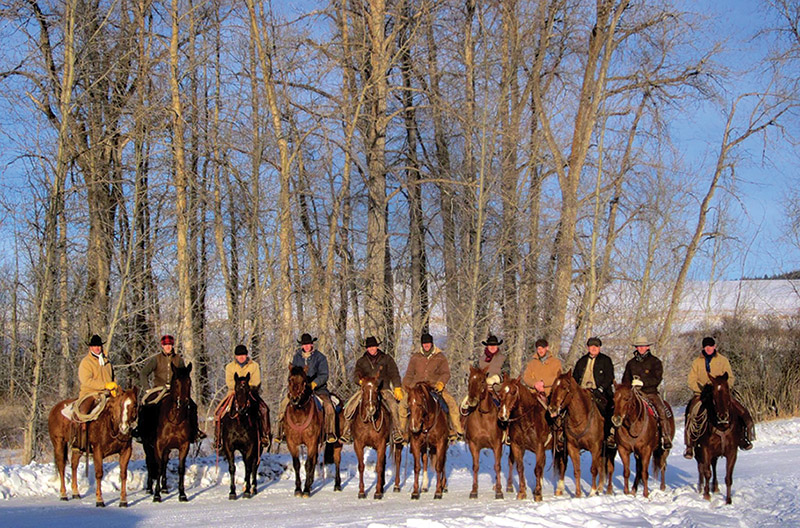
Cowboys and their horses at Douglas Lake Ranch ready for winter work. Photo: Douglas Lake Ranch
“The Gang Ranch has a lot of old school methods,” says Burke. But it’s unusual. Most cowboys live a different existence today.
“Cowboys nowadays have a lot more options,” says Terry Grant of “Mantracker” fame. He’s a director of Friends of the Bar U Ranch, a society which works with Parks Canada to promote ranching history through education and activities at the Bar U Ranch National Historic Site near Longview, Alberta (AB).
“Back in the 1880s, cowboys moved around a lot,” says Grant. “They owned a horse, a saddle, chaps, a sleeping bag, and would work for one or two years at a ranch, then move on to the next ranch.
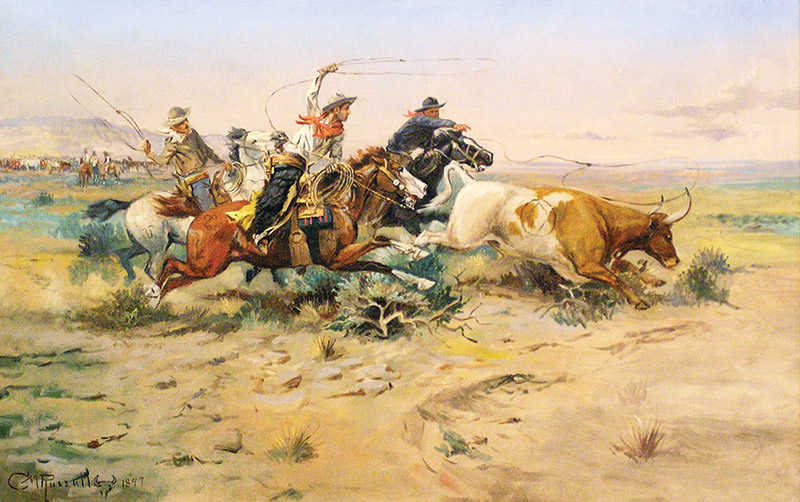
“The Herd Quitter,” a 1897 oil painting by C.M. Russell, Montana Historical Society MacKay Collection, Helena, MT.
“98 percent of the job was looking after cattle,” he says. “Moving cattle as they ate the grass down, calving, weaning, checking on them. The wintertime was a lot less work because a lot of the big ranches didn’t [hay] their cows in winter. They had a lot more land for grazing.”
Today’s Western Canadian cowboys work on ranches, in feedlots, on community pastures, and are hired full-time year-round or seasonally from spring calving to autumn weaning.
“If you call yourself a cowboy and you work on a ranch, you’re pretty good on a horse, can recognize a sick cow, and have the skills and knowledge to treat it out in the field in a very humane way,” says Grant.
Related: Family Farms and Ranches
Every season has its own rhythm, and each ranch operates slightly differently. Those who choose to cowboy embrace the lifestyle and challenging working conditions: long hours doing physical work in all weather. The job requires a hardy skill set, survival mindset, and desire for your own company. Cowboying can be hard on relationships and while permanent positions often include onsite accommodation and horsepower, the pay may be only $40,000 to $50,000 per year.

The cowboy lifestyle calls for long hours of physical work in all weather, with only a horse and a dog for company. Photo: Rinus Baak
Some ranches also hire day riders during calving, branding, fall gathering, or when cows escape. Day riders need to be handy, capable, and provide their own gear and horses. They earn about $200 to $250 per day. Feedlot riders are also in demand. They’re paid hourly to check cattle in vast dry lots where calves are fattened for market or sale.
Some cowboys are hired by word-of-mouth, but Burke submitted his resume to the Gang Ranch, had a phone interview, and was hired sight unseen. He provides his own tack, chaps, and rope while the ranch provides horses, farrier equipment, and accommodation. Every cowboy is assigned a “string” of horses to train and use, plus they have to do all their own shoeing. Burke has eight or nine horses in his string, and often rides the tougher horses that others prefer not to.
The Gang Ranch crew includes six cowboys, a Cow Boss, and a slew of working dogs owned by the cowboys. It’s a men-only crew — not because cowgirls aren’t keen to work there — but because of the remote camp setups.
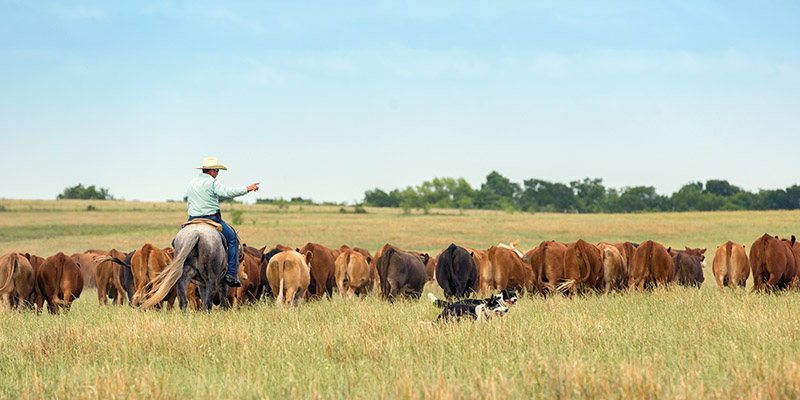
Working dogs help cowboys move the cattle and keep the herd together. Photo: AdobeStock/Carrie
“Women are just as tough as men, but we’ve got tent camps and line camps with cabins where it’s just one big open room,” says Burke, “There’s no privacy.
Related: Ya Ha Tinda, The Canadian Government's Only Working Horse Ranch
“We live in log cabins with wood stoves,” says Burke. “It’s about as backwoods as you can get — like what you see in cowboy movies.”
The cabins were built decades ago by cutting down trees, peeling logs, and stacking them to create the cabins which stand today.
“When you’ve got no power and use wood stoves, you get pretty good at lighting fires,” says Burke. “That’s how you stay alive. It don’t get much more cowboy than that.”
Horsepower
“I think the horses have changed,” says Grant. “They used to be a little longer-legged because they might travel 20 miles before lunch. They were basically Thoroughbreds, but they could handle a rope like any other horse. Today’s horses are more the Quarter Horse type with shorter legs. They’re not built for making miles, they’re bred for sport. But they’re smarter around cows and easier to work with, too.”

With a string of eight or nine horses, Mack Burke often rides the tougher horses that others prefer not to ride. Photo: Mack Burke
The Gang Ranch used to breed their own horses — generally Hancock Quarter Horse lines that are known for big bone, solid feet, and their ability to travel rough country day after day. Now, Douglas Lake Ranch is providing the Gang Ranch with horses, and every cowboy starts a few young horses each year to add to their string.
“Usually they’re started when they’re two-year-olds and then turned out until they’re three or four,” says Burke. Then the cowboys give them exposure at the home ranch or during shorter days and overnight trips to surrounding cabins.
“They need to be physically mature enough for the job,” he says, explaining that the youngsters need to be brought along slowly so they’re not injured by too much work too soon.
“We do 40- to 50-kilometre days in spring and summer,” says Burke. “Once they’re on the payroll, they have to withstand those kinds of miles.”
Related: Roping 101: Cowboy School
On other ranches, cowboys can choose whether to ride ranch horses or bring their own.
“Some big ranches say you have to have your own horses,” says Sue Jensen, a former cowboy at Deseret Ranches near Raymond, AB. “So, there are a lot of cowboys that ride colts all winter. They start them and then turn around and sell them in the spring.”
Calving and Branding
Depending on ranch operations, calving season can start as early as January and continue well into May. Much like Thoroughbred breeding farms, ranches that raise purebred cattle may prefer calves born in January so they’re more mature for their age. However, calving that early can be risky. Cowboys may struggle to keep newborns alive during -40 degree Celcius weather.
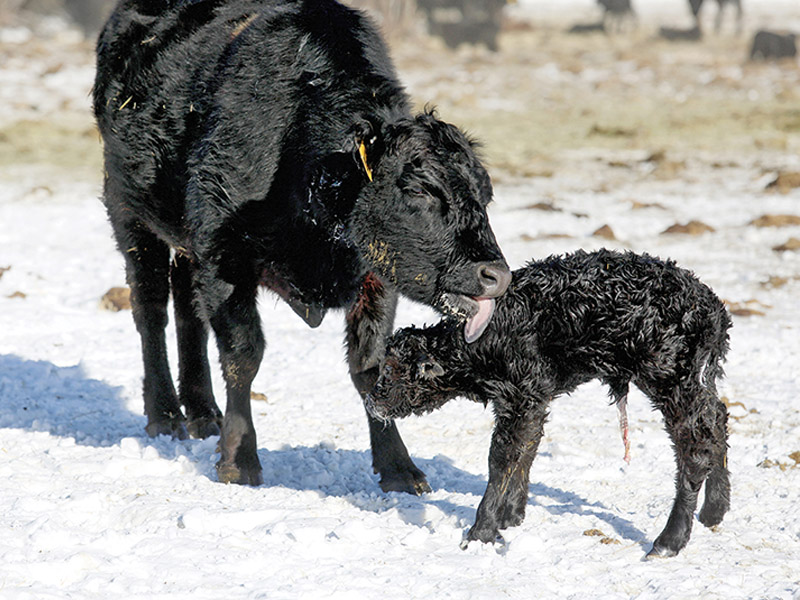
A Black Angus cow and her newborn calf in the freezing temperatures of winter. Cowboys are responsible for the well-being of the herd and sometimes struggle to keep newborn calves alive in bitterly cold weather. Photo: Dreamstime/pix569
Calving at the Gang Ranch is more a matter of letting nature take its course. The ranch runs approximately 2,000 cow-calf pairs of certified Black Angus cattle and the cattle graze and calve in pastures near the home ranch, with minimal interference. On a typical day the cowboys wake up and saddle their horse, have breakfast at 6:30 am, then ride out to check fences or cattle. They help cows calve, doctor sick ones, and rotate them through pastures.
For other cowboys, calving can mean high stress, lack of sleep, and lots of 12-plus hour days.
“The first year I was cowboying we were calving 7,000 head in a snowstorm in April,” says Jensen. In preparation for calving season, they spread straw in two big barns and set up separate little pens. The cows were fed hay in nearby fields and the cowboys worked 12-hour day-and-night shifts, riding through the herds and watching for cows whose water had broken. The cow was then herded into the barn, where she’d calve. Once the calf was nursing, it was tagged and the pair were either left in a small pen or sent to a new herd of cow-calf pairs. If a cow calved in the field, a cowboy would lift the calf onto a plastic sled and drag it into the barn behind a horse with the mother cow following along.
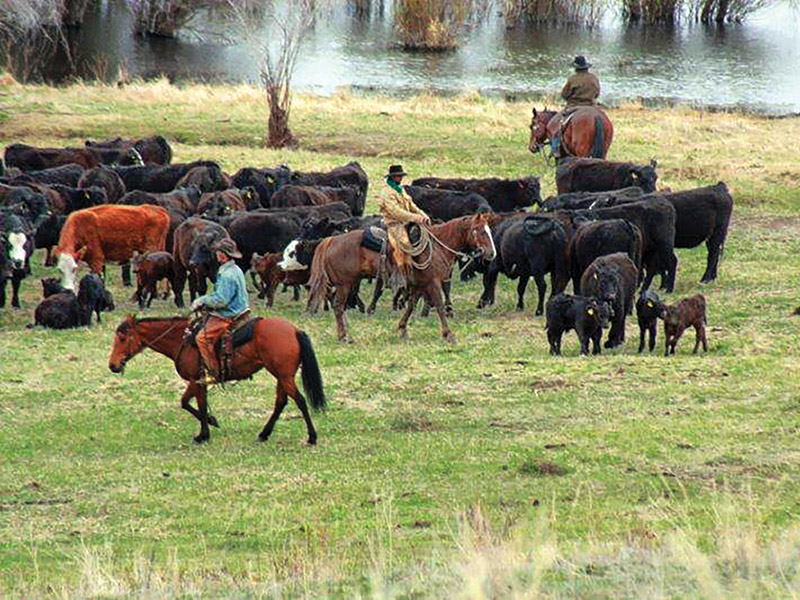
After branding, cattle and calves are sorted at the Gang Ranch, which runs approximately 2,000 cow-calf pairs. Photo courtesy of Gang Ranch.
After calving season, which generally takes between two and six weeks depending on the ranch, it’s time for branding, which is a favourite time of year for many cowboys.
“We wait for good weather for branding,” says Jensen, explaining that day riders are often hired to help out. The calves are roped, dragged to a fire where steel branding irons are waiting, vaccinated, branded, and — if they’re male and not suitable for breeding — castrated.
Related: At Home on the Range
“It’s a really good time,” says Jensen. “The neighbours come and there’s a big dinner afterwards.”
On large operations, branding may take weeks.
“We were doing 600 to 700 calves per day,” says Jensen. “And then the next day you have to go and check all the calves to make sure they’re alright. The following day we’d have another branding.”

Formerly a community for working cowboys’ families, with several services including a store, schoolhouse, and post office, the Gang home ranch is still home to the ranch’s cowboys. Photo courtesy of Gang Ranch.
Summer Miles
Once all the calves are branded, the Gang Ranch cowboy crew trail cattle to new pastures. The cowboys move with them, settling into cabins at “cow camps.”
“We’re bovine relocation specialists,” says Burke. “We’re just moving cows around. That’s pretty much all we do.”
As summer progresses and the Gang Ranch cows eat down the grass around camp, Burke and other cowboys move the herds even farther to remote “summer camps.”
They use “branding traps” — post-and-rail corrals — to reorganize the cattle into groups of approximately 250 animals, which are then trailed to new pastures.
“We move the cows from our springtime country to our summertime country,” says Burke.
Cowboys fix fence, build fence, and check on their herds every couple of days.
“We’re in big, big fields and have to check there’s feed,” says Jensen. “Last year there was drought, so the cowboys were moving the cattle a lot sooner. They might only be in one field for two weeks.”
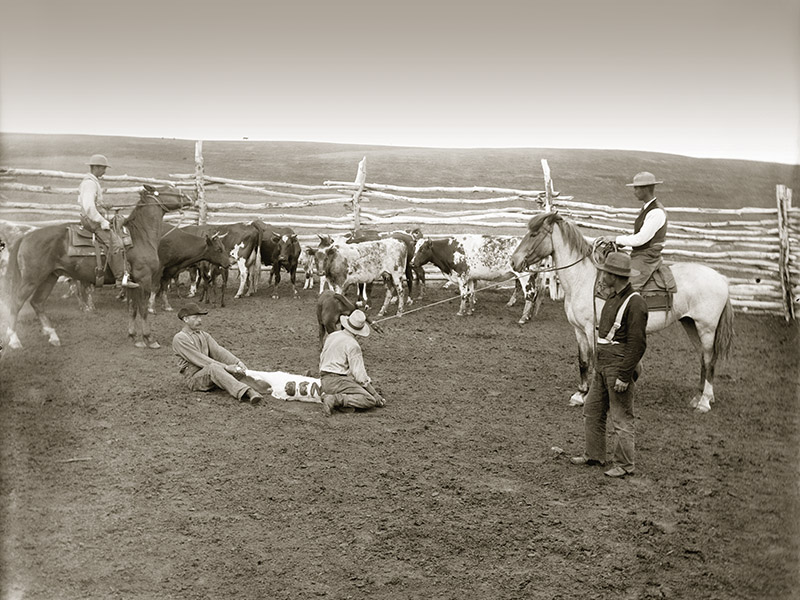
Gang Ranch cowboys still use many old school methods, and live and work much as cowboys did more than 100 years ago. This photo shows cattle being branded on Sandy McCarthy’s ranch on Bear Creek, east of Maple Creek Saskatchewan, in 1897. Photo: Glenbow Archives NA-44-47
July and August are breeding time. The Gang Ranch and many smaller operators leave that to nature, simply running bulls with the cows. Other ranches artificially inseminate their cows a few days after injecting them with hormones to ensure they come into heat. A few months later, those same cows will be checked by ultrasound to ensure they’re pregnant. Those that haven’t caught will be sold.
Meanwhile, the Gang Ranch cowboys are riding west into the Chilcotin Mountains, trailing about 1,000 cows. Two to four cowboys live together at remote camps with names like “Hungry” and “Relay,” which the ranch has built and operated for decades. Supplies are packed in by horse, ATV, or truck every few weeks depending on camp access. Day after day, the cowboys chop wood, cook for themselves, bathe in creeks, wrangle their horses, keep predators at bay, and track their cattle.
Related: Trail Riding & Guiding for a Living
“There are lots of times when you’re just out there riding by yourself,” says Burke. “Basically, you just start in the morning and get back by dark. But sometimes in the summer we’ll start riding at 2 am just to beat the heat.”
The cow camps are so remote and difficult to get in and out of that Gang Ranch cowboys work 11 days on, then have three days off at the home ranch. They use a handheld inReach® satellite device to communicate with the Cow Boss and arrange supplies.
“There’s a lot of freedom and you have to do a lot of critical thinking, just figuring things out on your own,” says Burke.
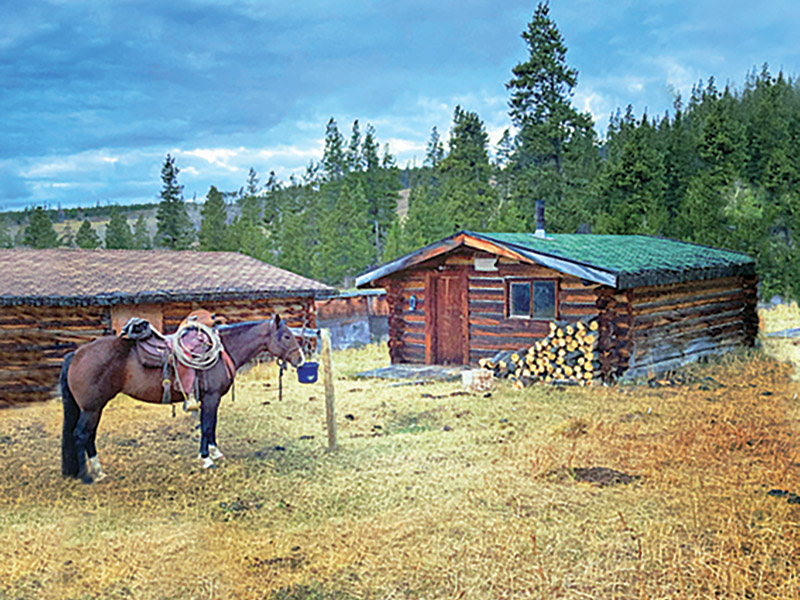
Cow camp at the Gang Ranch. Photo: MackBurke
Gathering
As summer changes to autumn through September and October, instinct drives the Gang Ranch cattle out of the mountains and toward the home ranch.
“They know when it’s time to come home,” says Burke. Often, the bulls aren’t so keen, so the Gang cowboys put in long days searching for stragglers and bulls that haven’t come out of the mountains, cajoling and driving stubborn stock.
“It’s a lot of roping,” says Burke explaining that the bulls can be particularly uncooperative.
As the cows mosey towards home, the cowboys hold them on new range from November onwards to wean the calves from their mothers.
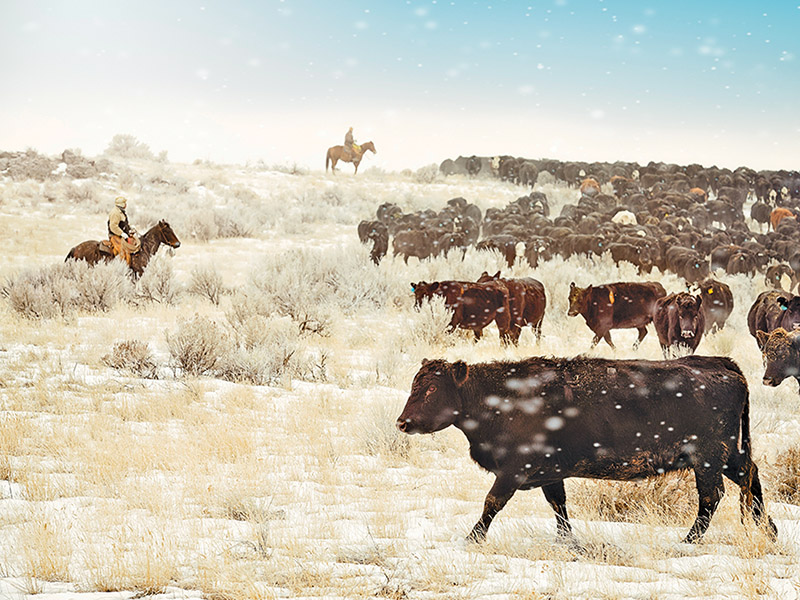
Mack Burke says cowboys are “bovine relocation specialists” as they frequently move the cattle to fresh pastures or bring them home at calving time. Above: iStock/Life Journeys/Below: Denis Schalz
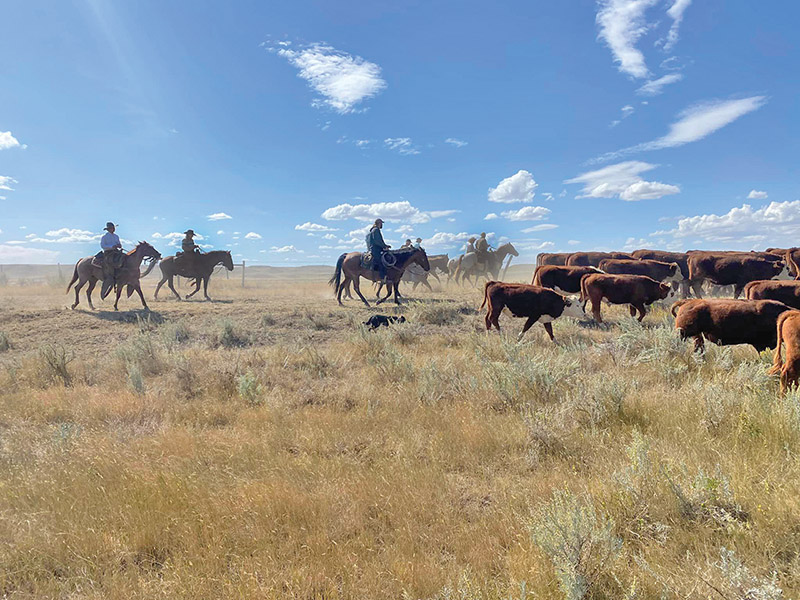
“We keep the cows there, keep cows alive, keep predators away, and when the Cow Boss orders you to bring the cows home, you take them back to the home ranch,” says Burke.
For cowboys on other ranches, autumn can look quite different.
In September and October, two cowboys will round up herds of cow-calf pairs and wean the calves from their mothers. Deciding which calves to cull and which to keep depends on the goals of each ranch and their carrying capacity. Purebred operations may have fewer calves to sell as they try to improve their stock, while operations breeding for the beef market, or which have milk-producing cows, likely have more.
“They start early in the morning and will have the calves weighed, loaded on the trucks, and shipped off-site all in one day,” says Jensen.
Average-sized steers (young castrated males) and heifers (young female cows which haven’t been pregnant) between six and twelve months old are trucked to a feedlot that’s either on the ranch or off-site. Smaller calves may be fed up on the ranch before being sold, while large calves are immediately sold at local auction. Some ranchers maintain ownership of their calves but send them to feedlots to gain weight. Others sell them directly to the feedlot.
Feedlot Riding
Feedlots are animal feeding operations with cow populations ranging from 5,000 to 50,000 cattle, all of which have to be fed, watered, and health-checked every day in all weather. Enter the cowboy.
“We ride about five hours every day,” says Everett Fairlie, a farrier who cowboys part-time at a feedlot north of Lethbridge, AB.
Full-time feedlot riders generally work 11 days on and three days off, have at least two of their own horses living in pens on-site, and work from 7 am to 4 pm every day or until the work is done.
Related: Professionalism in the Horse Industry
“Every morning we ride through all the cattle,” says Fairlie. “There’s three of us, and there’s 17,000 cattle in 97 pens so we check them all, see if any are sick, or there’s anything wrong with them.
“If any need help we take them to a treatment barn and doctor them,” he says. “We just herd them over there with the help of our Border Collies.
“I like reading the cattle,” says Fairlie. “There’s no flag that goes up if one’s sick. You just have to figure it out. It’s an art, reading cattle.”
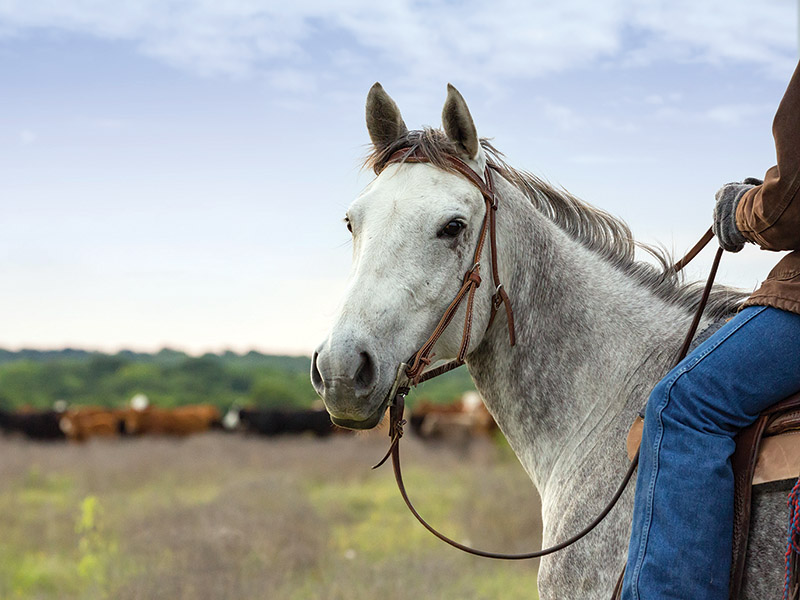
Photo: AdobeStock/Carrie
Survival
In November and December, southern Alberta cattle are often still grazing or eating full stalk oats that were cut and left on the ground as cattle feed. By January, winter snows mean cattle need hay, silage, pellets, and minerals, so cowboys spend their days feeding cattle, ensuring automatic watering systems aren’t frozen, and riding herd to check cattle health.
When Gang Ranch cattle finally return to the range around the home ranch, the cowboys have a brief respite before calving begins. The home ranch was formerly a community for working cowboys’ families and boasted a store, post office, school house, cook house, washhouse, housing, mechanics shop, barns, office, and manager’s residence. Some of it’s gone now, but the home ranch is still home to the Gang Ranch cowboys.
“The cowboy way of life has changed,” says Jensen, explaining that living out in cabins on large swaths of pasture just isn’t part of cowboy life on prairie ranches anymore. Nowadays, cowboys live elsewhere and trailer their horses to each pasture to check the cows, then load their horse up again and haul to the next pasture rather than riding all day.
The poor pay and potential for injury doesn’t jibe with today’s lifestyle, either.
“A lot of cowboys do it when they’re younger but then they go into the oil fields or the mines to make more money,” says Jensen. With money in the bank and regular days off, they can compete at ranch rodeos, afford better horses and gear, plus have a family.
“It’s a hard life and you have to love the livestock and lifestyle to keep cowboying,” says Jensen.
Regardless of the hardships, there are still cowboys out riding the range and caring for cattle every day, in all weather.
The cowboy way lives on.
Related: The 21st Century Cowboy
Related: Dogs and Horses - Man's Best Friends
Main Photo: iStock/CG Baldauf



